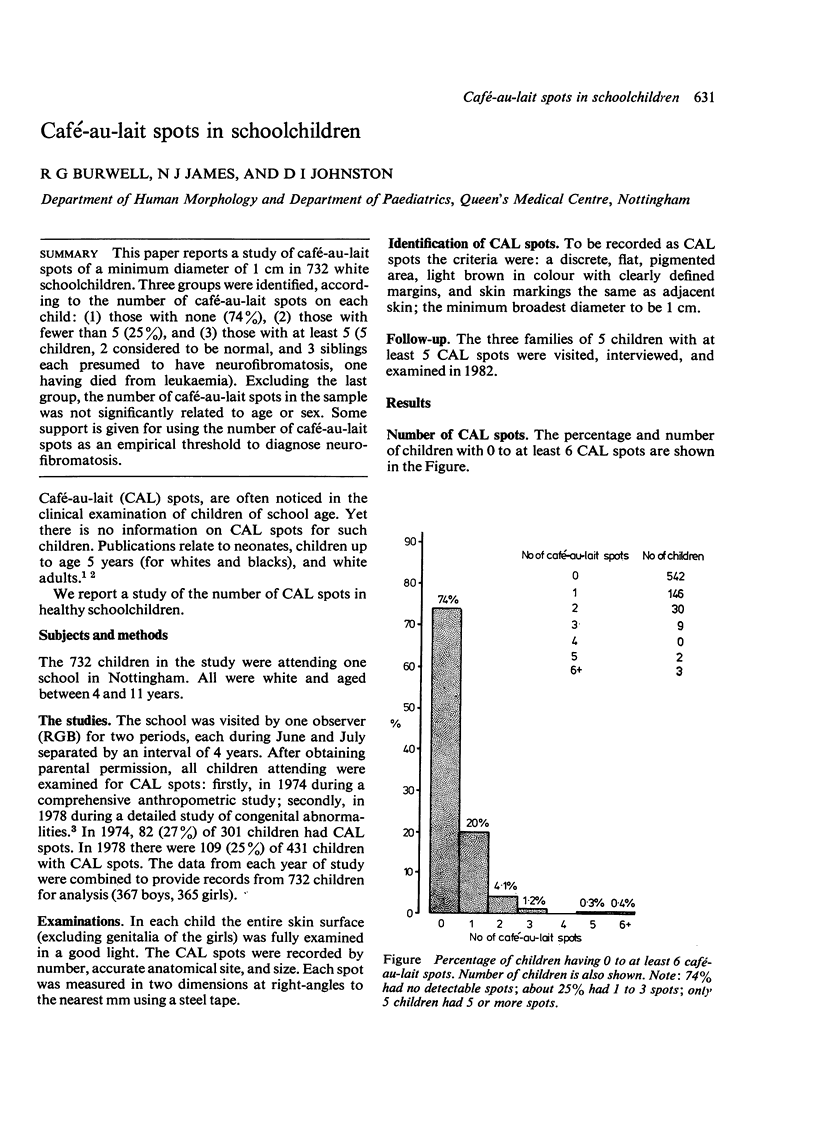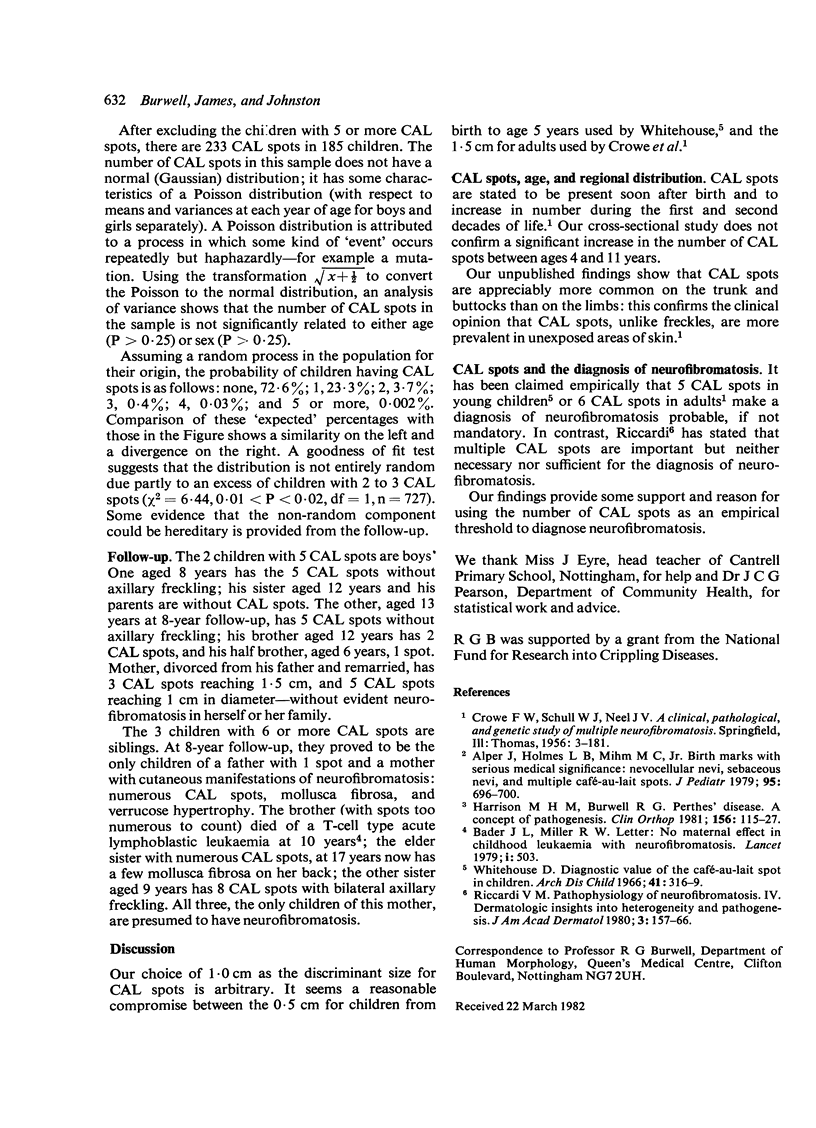Abstract
This paper reports a study of café-au-lait spots of a minimum diameter of 1 cm in 732 white schoolchildren. Three groups were identified, according to the number of café-au-lait spots on each child: (1) those with none (74%), (2) those with fewer than 5 (25%), and (3) those with at least 5 (5 children, 2 considered to be normal, and 3 siblings each presumed to have neurofibromatosis, one having died from leukaemia). Excluding the last group, the number of café-au-lait spots in the sample was not significantly related to age or sex. Some support is given for using the number of café-au-lait spots as an empirical threshold to diagnose neurofibromatosis.
Full text
PDF

Selected References
These references are in PubMed. This may not be the complete list of references from this article.
- Alper J., Holmes L. B., Mihm M. C., Jr Birthmarks with serious medical significance: nevocullular nevi, sebaceous nevi, and multiple café au lait spots. J Pediatr. 1979 Nov;95(5 Pt 1):696–700. doi: 10.1016/s0022-3476(79)80713-1. [DOI] [PubMed] [Google Scholar]
- Bader J. I., Miller R. W. No maternal effect in childhood leukaemia with neurofibromatosis. Lancet. 1979 Mar 3;1(8114):503–503. doi: 10.1016/s0140-6736(79)90868-7. [DOI] [PubMed] [Google Scholar]
- Harrison M. H., Burwell R. G. Perthes' disease: a concept of pathogenesis. Clin Orthop Relat Res. 1981 May;(156):115–127. [PubMed] [Google Scholar]
- Riccardi V. M. Pathophysiology of neurofibromatosis. IV. Dermatologic insights into heterogeneity and pathogenesis. J Am Acad Dermatol. 1980 Aug;3(2):157–166. [PubMed] [Google Scholar]
- Whitehouse D. Diagnostic value of the café-au-lait spot in children. Arch Dis Child. 1966 Jun;41(217):316–319. doi: 10.1136/adc.41.217.316. [DOI] [PMC free article] [PubMed] [Google Scholar]


